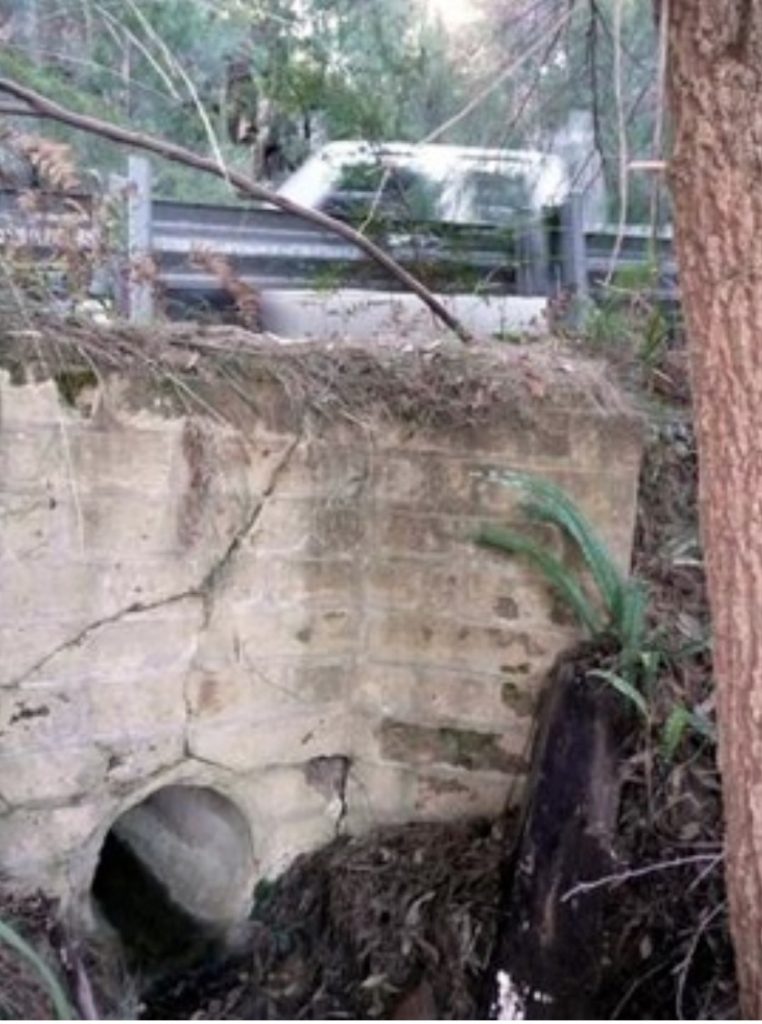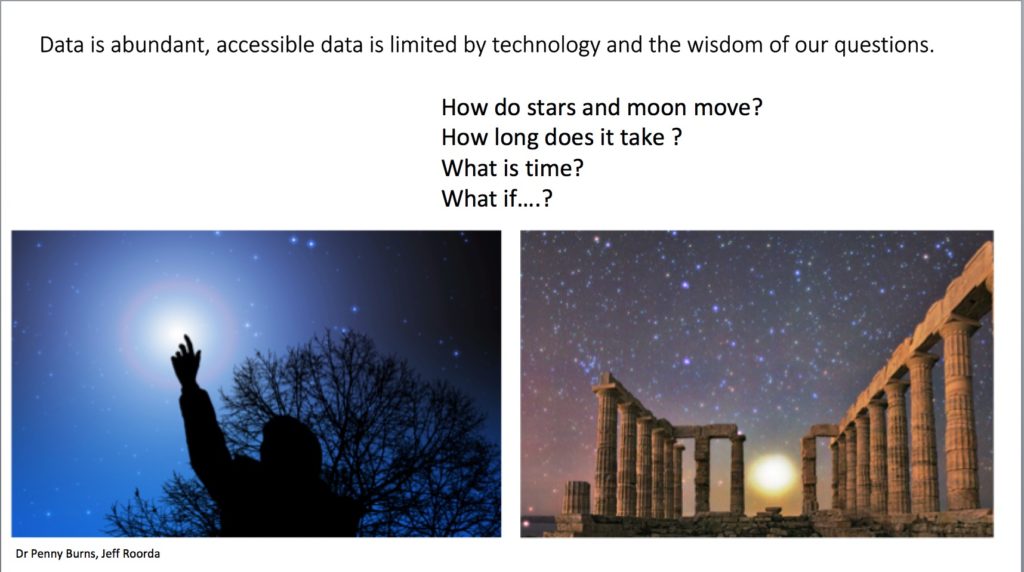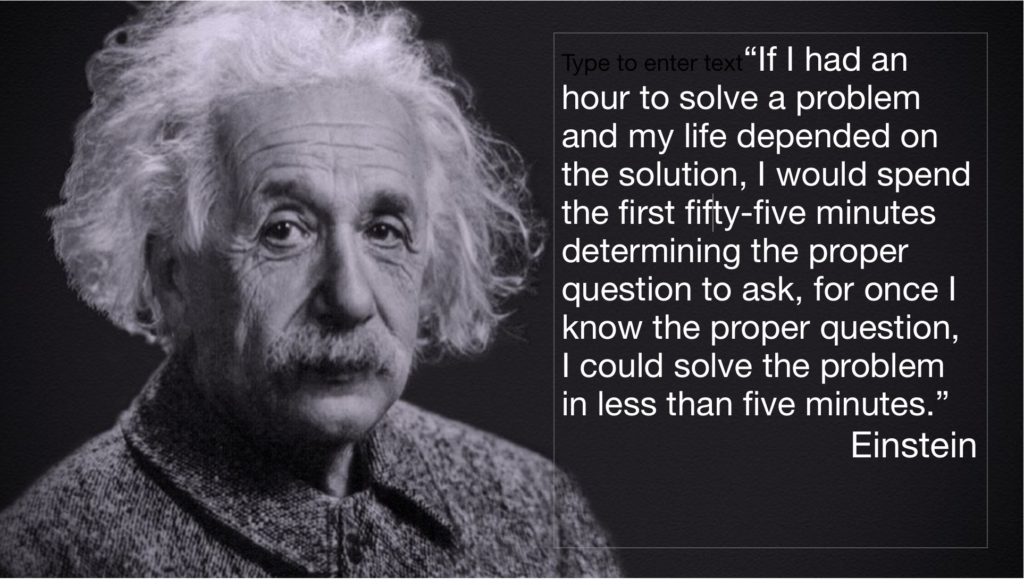
An idea worth exploring.
Two suggestions:
- Read Tina’s article in Fast Company, “How Reframing a Problem Unlocks Innovation,”
- And watch for our forthcoming podcast where we will have fun – and you will too – exploring questions.

How hard can it be to make a podcast? Surely, all you have to do is choose a theme. find someone who is willing to talk on this theme, and then ask them questions. The guest then provides the answers. Job done! Many podcasts have used this answer providing format.
But what if you don’t want answers? What if, instead of providing your listeners with opinions or ready made solutions to a given inquiry, you would really like to support their ability to generate inquiry itself?
Asking better questions is a skill we all need to develop for all areas of our life, and for long-living infrastructure decisions in a rapidly changing world it is critical. These decisions impact the lives of many thousands, if not millions, of people and for many decades to come. Once built, they often cannot be un-built except at incredible cost, damage to the environment, and waste of resources. Moreover the ongoing costs of such structures are, as we know, determined by actions taken at the very earliest stages of decision making, when knowledge is lowest!
Some existing solutions will continue to be relevant as the world changes and others will not but how can we tell which is which? Only by asking questions. New questions. Different questions. Lots of questions!
If we ask the same questions we have asked before, we will get the same answers. And if we ask the same questions – blindly – simply because we have always asked them, we will not even be aware of the mistakes we may be making.
But question asking is hard.
Surely not! Any parent knows that young children ask questions naturally – and inexhaustibly! However, at some stage, parents get worn out with continual questions, many of which they do not find themselves capable of answering – ‘why is the sky blue?’ ‘why do people die?’ etc. So mothers start to say ‘Ask your father!’ and fathers say ‘Ask your mother!’ and both say ‘Not now, I’m busy’. In other words we actively discourage question asking at home.
This is compounded at school, where ‘teaching to the test’ has taken hold and teachers know that they have to instill a certain number of facts in their pupil’s heads lest they, themselves, receive a failing grade! In this grading environment, even well intentioned teachers may feel that time out for answering pupil’s questions let alone encouraging more questions, is time that they just cannot afford.
By the time students reach secondary school, they have learnt two things about questions – one, that it is not their job to ask them, and two, that they are to be feared! Studies have shown that in a typical class teachers ask about 90 questions to one or two by students. And the teacher’s questions are designed to test whether what they have taught has been absorbed. Such questions do not lend themselves to the fun of exploration, only the embarrassment and humiliation of wrong answers.
Now the students get a job and it is not long before they come to recognise that asking questions in this environment brings even more problems – asking a question may reveal how much you do not know, or asking a question, particularly of a senior, may seem as a challenge to ‘the way things are done around here’. Better to keep quiet. By this time we have learnt how not to ask questions.
So if ‘not to ask questions’ is a learnt skill, how do we unlearn?
Those of you who are parents might like the story of Isidor Rabi who won the Nobel Prize in Physics in 1944 for his discovery of nuclear magnetic resonance. He credits his success to his mother who, whenever he returned home from school, would ask ‘Did you ask a good question today? (from Hal Gregerson ‘Questions are the Answer’)
And we can do the same.
We can ask ourselves – did I ask a good question today?
This is what our forthcoming podcast is designed to encourage. Infrastructure decision making urgently needs good questions
– but so do we all!
Quantify the unquantifiable and you change the way that you are able to state goals, track performance, benchmark, evaluate, communicate, and measure outputs not just inputs.
Costs are easy to measure. they are quantitative. The aspects of performance that we are interested in, however, are nearly always qualitative. We want to know what effect our actions have had. Has this action of ours made things better or worse? Such qualitative measures are harder. This is why we are much more likely to default to measuring efficiency (a supply side cost issue) than effectiveness (a demand or user side performance issue). Consider some of the major measures that we use to track how we are going, as a country, or as an organisation – e.g. GDP, life cycle costing. Even benefit-cost analysis will traditionally focus on the measurable dollar amounts and fudge the unquantifiable externalities (both benefits and costs).
We can tie ourselves up in knots trying to express everything in dollar terms and to the extent that we succeed, we may be unaware of the elements inadvently omitted.
So today I want to introduce a technique that was introduced to me 20 years ago by Norman Eason, the Founder and First President of the UK Institute of Asset Management. He gave me this work to publish and I present it to you. If anybody would like to take up the challenge to develop it and take it further, now that technology has made tasks like this so much easier, maybe turn it into an App, I would be happy to put you in touch with the author.
Norman called his technique CAT – Comparative Assessment Technique. It enables you to determine whether qualitative outcomes are improving, whether goals have been reached. – and, if not, how far we are away from the desired end-state (and how much it will cost to get there!)
CAT is based on the simple, but operationally powerful, idea that any qualitative output can be expressed in terms of its worst state, its best, and all possible states in between.
Being able to measure qualitative outcomes/outputs makes it possible to
- Track developments over time
- Compare outcomes with other organisations
- Relate activities to outcomes
- Relate the cost of activities to the improvement in outcomes
So how is it done?
Suppose we use as an example of intangible factors the difficulty in measuring the Cleanliness of a Reception Area. We could list all the possible states, from worst state to best state, as follows: –
Ladder – Cleanliness of a Reception Area
- The filthy nature of the area is seriously affecting our relationships with staff/clients.
- We are always receiving complaints about how filthy the area is.
- We often receive complaints about how filthy the area is.
- We have had complaints about how filthy the area is.
- Although we have not yet received complaints from staff/clients about the dirty condition of the area, we know that this is likely to happen.
- We feel that as a company we are embarrassed by the dirty condition of the area.
- We feel that staff/clients believe that the area is very often dirty.
- We feel that staff/clients believe that the area is usually clean, but is often embarrassingly dirty.
- We believe that staff/clients think that the area is almost always clean.
- We believe that staff/clients think that the area is always clean.
- We never have any problems with the cleanliness of the area.
- We believe that staff/clients think that the cleanliness of the area is always excellent.
- We are always receiving favourable remarks from staff/clients about how clean the area is.
There is no limitation on the number of steps to be used
Note that we have not attempted to limit the number of steps to ten; this would have been the natural tendency, but it is pointless and an artificial irrelevance to the definition of the states. The CAT term for this list is a ladder and each listed state is a step on that ladder.
Setting Target Step
We can now designate the Target Step that the user and supplier agree should be met. Suppose this is Step 11. We never have any problems with the cleanliness of the area.
Setting Actual Step
The user and supplier can now select a step that matches the actual position at any one time. This is the Actual Step. Suppose this is selected to be Step 5. Although we have not yet received complaints from staff/clients about the dirty condition of the area, we know this is likely to happen.
Comparing the Two Steps
We can now obtain a measurement of the actual condition in relation to the target condition, thus Step 5/Step 11 = 0.45 so we are 45% of the way there.
Client-Contractor Relationships
Ladders such as this, especially if developed with joint input, have the potential for far better communication and understanding between client and contractor. It is possible for both to see clearly when a goal has not been achieved (with potential for service improvement) and when it has been over- achieved (with potential for cost savings)
Two interesting things become obvious from our earlier calculation.
- We now have a numerical value of something that previously could only be considered in subjective terms. (Target 45% achieved)
- We now have a decimal value of the relative position of the actual state against the target state, even though we did not start with a scale of ten.
Note:
- Any ladder can be of any length. In fact, the user and the supplier of the service determine the length by incorporating as many steps as are required to fully describe the activity.
- It doesn’t matter that the Target Step is not the top step of the ladder. Target Steps can be moved as new goals are agreed. Note also that there need not be equal increments between steps, although equal steps would be ideal.
- The technique is not restricted to Building Services. Ladders can be used to measure any activity in any one of a number of areas. These areas are not limited to commerce or industry; Local and Central Government are also relevant.
CAT can be applied to the measurement of anything that is intangible
What do you wish to measure?
In assigning CAT to an application area, it is helpful to consider what precisely is being measured. This may seem to be an obvious statement, but there is often confusion in this respect whether tangible or intangible measurements are required.
For example, do you wish to measure the performance of a group, or the results of their work? The two are not necessarily the same. CAT accommodates these more precise definitions of activities by providing for three types of ladder.
CAT can measure
- the performance of a task,
- the effectiveness (or result) of the task, and
- the consequence of the overall activity, e.g., what do the users think of the results?
These ladders can be used separately or combined into groups – any groups that the user organisation feels are important to measure or compare. Also, the activities associated with ladders can have parent/child hierarchies so that, for example, measurements can be rolled up from individuals to groups, to departments, to sites, to divisions and ultimately to the overall company or organisation. In both cases, users also need to agree the weights to be given to each ladder and activity.
Ladders can also be used for comparison in benchmarking exercises. For benchmarking, it is necessary for user organisations to agree on the standardisation of ladders.
If you would like to see the complete report, which contains examples of CAT ladders for consequences, performance, and effectiveness, email me at penny@TalkingInfrastructure.com
Do you know of similar work or perhaps other means of quantifying the unquantifiable?
[et_pb_section bb_built=”1″][et_pb_row][et_pb_column type=”4_4″][et_pb_text]
 Last week I suggested why asset management – at its early and basic level – is unstable. Getting your data reliable and customised so that you get credibility with your community is time consuming. But it pays! It not only protect your assets – it also protects your staff!
Last week I suggested why asset management – at its early and basic level – is unstable. Getting your data reliable and customised so that you get credibility with your community is time consuming. But it pays! It not only protect your assets – it also protects your staff!
Let me tell you a story
This is a true story about a certain council in New South Wales. In June 2007, during a wild storm, a section of the road collapsed causing a vehicle with 5 people to plunge into the flooded creek below. A mother, a father, their two children and another woman, a family friend all died.
The cause turned out to be an unlined culvert that had given way. In the subsequent coroner’s investigation it was revealed that:
• The council had been aware of the problem with the road as early as 2002 and had prepared an estimate to reconstruct the entire culvert but that details were never entered into the record management system.
• In 2004, pavement repairs triggered a request by the council’s asset manager to ask for quotes for concrete lining of the culvert with tenders called. But again, the information was not entered into the record system and no follow-up action was taken.
• Emails with quotes for roadwork that may have averted the collapse were not considered official records and were not recorded.
• A key finding of the review was ‘that at the time of the road collapse council’s inadequate reporting practices led to a failure to identify the critical need to upgrade some of its key road infrastructure’
Internet comment on the report of the accident was savage
“Too little too late. Good to see our rate money going towards incompetent council workers who hide behind their computers pretending to be busy. And when the accident did happen they actually had the nerve to try to pass the blame to the state /federal government. This accident should not have happened. For the lazy workers who didn’t do their job properly, how do you sleep at night?”
Is it a case of ‘lazy workers’ or did the system fail them? Unless your system is sound,how would you know? More especially how can they demonstrate their diligence to the outside world?
A poor asset management system puts your staff at risk!
The Central Coast’s ‘Express Advocate’ reported the mother of the young woman whose family perished as saying that she hoped the people who made the human error think about it every night. ‘We certainly do. They have destroyed our family’.
No member of your staff should have to live with this responsibility!
And, although reported as ‘human error’, if you look at the numbers of different people involved in this story, you have to ask yourself whether it is really ‘human error’ or actually ‘system error’.
Now the Coroner’s report was covered in both of the local papers. The reporting was noteworthy for two reasons: One: because both journalists actually used the term ‘asset management’ in their reports, and Two: because both reported that whilst asset was not good at the time of the accident, it was now ‘best practice’.
I was curious.
What had happened to improve asset management so much between the accident in June 2007 and the Coroners Report in March 2009? (less than 2 years) And what was it that impressed the journalists so much that they both reported that the council was now ‘best practice’ in asset management.
I decided to visit the council and find out. When I walked into the foyer, on the wall facing the entrance was their ‘mission statement’. It said simply “We aim to be a council that the community is proud of” and underneath it said “We are not there yet!”
That told me a lot about the current attitude of that council and their determination to get better.
Then I met with the Asset Manager and his Director of Information Services. Both were extremely open, articulate, knowledgeable – and very enthusiastic about asset management. They knew they had to improve their asset information and had taken serious steps in this direction.
But they also knew that improving asset information alone is not enough. They knew they also had to understand and improve their processes. And this is where they really shone. They analysed and streamlined each of their processes. There were dozens of these processes, each reproduced in large A3 size – and laminated, indicating that these were for constant use. They were bound in sections relating to different functions.
Mapping is a great way to understand your processes – and a great way to show others that you understand them! My guess is that it was these graphics that so impressed the journalists!
Taken together,
- greatly improved information +
- A positive, action-oriented, attitude – as expressed by the foyer plague and the confidence and knowledge of the Asset Manager and his Director of Information Services +
- Understanding of Asset Management Processes – as illustrated by the process maps,…
all added up to a situation where two different journalists from separate papers, in reporting the story of council failure, would both modify their criticism by making it clear to their readers that the council’s asset management was now ‘best practice’.
But there was an even better result.
After the coroner’s findings had been handed down with all the attendant publicity, the Sydney Morning Herald reported on yet another culvert in poor condition in the council area. In ordinary circumstances you would have expected the press to have a field day with this. But it didn’t happen.
Despite the obvious cracks and poor condition of the culvert, the Sydney Morning Herald’s journalist provided very balanced and moderate coverage. He quoted the consulting engineer’s findings, made some criticisms of the council but then tempered the report with the recognition that the cost to repair the problem was high relative to the annual budget; actually quoted figures, and comment by other councils about this problem and recognised that a large part of the problem was that the roads were handed over to councils by the State Government, who had previously had responsibility for them, with insufficient maintenance funds attached.
What price would you pay for fair media coverage?
Next week I look at why even good asset management is not enough. Why we have to ‘go beyond’.
[/et_pb_text][/et_pb_column][/et_pb_row][/et_pb_section]

Data, Facts and Evidence
What makes a ‘fact’ a fact? What makes evidence, evidence?
The fictional detective Joe Friday is famous for something that he actually did not say – “Just the facts, Ma’am”. Many a CEO used to request the same. But is it possible to lift ‘facts’ out of context and for them still to be meaningful? Take Julius Caesar’s crossing of the Rubicon in 49 BC. Many others crossed the Rubicon both before and after but their crossings are not recorded as ‘facts’. So why Caesar? Caesar’s crossing with his army became a historical ‘fact’ worthy of remembering only because it is considered to have led to the Roman Civil War, which ultimately resulted in Caesar becoming dictator for life and the rise of the imperial era of Rome. In other words, it is the ‘context’ that makes this particular crossing of the Rubicon a ‘fact’.
Data is meaningless, until…
Data, by itself, is without meaning. It is mere blibs – on paper or on screen. It only yields meaning when interrogated. Ask the wrong questions and we get wrong answers. In his presentation to the IPWEA Congress in July, Jeff Roorda observed that when Copernicus proposed that the earth moved around the sun, the data that had been collected about the movement of the stars and the sun did not change. It was just that it was interrogated through a different question.
Not all data is created equal
While natural data may remain constant (although perhaps not well understood), the same is not true of data that we use today in our management systems. That data has been selected, chosen and shaped by the questions that we have asked of it in the past. For example, if the focus of our questions has been on the current value of our asset portfolios, we may have calculated, and recorded as data, the depreciated value but have failed to record the age distribution without which we have no way of knowing what that value means in terms of renewal timing. If we recorded our assets in historical cost terms, we may be able to account for their accuracy by referral to the invoices of the time, but it yields no management information. If we recorded our maintenance expenditures by site but not by what was done on that site, we may know where it has gone, but we won’t know what was done and so what we may have to do later.
Today, our ability to access and analyse data enables us to answer old questions with more precision. This is exciting. The easy thing to do is to collect more of what we have collected in the past and to address the same questions. In other words we can use new data to answer our old questions, questions that were themselves shaped by the data limitations at the time.
So, an even more important question might be – are we prepared to ask new questions that cannot be answered simply by inserting more data in our current current data frameworks?
Are we prepared to rethink our data frameworks? Our thinking models?
With new technology we can now create an abundance of data very cheaply, not only historical but real time data. In fact, we may well argue that anything we can think of we can now collect data on. To take advantage of this, we cannot let ourselves be hamstrung by the assumptions that have ruled in the past and the questions that these assumptions have generated. But having – at great expense – assembled the data we now possess – how do we ask questions that move beyond the models we have already developed?
This is one of the areas that we will be examining in our future podcast – “Talking Infrastructure: creating better questions”
 In the sharing economy (Uber, Airbnb) participants either earn income from assets that would otherwise be lying idle or benefit from access to assets that they only need for a short while. Now, what started with consumer services, is moving to business. Why own your own combine harvester when you can rent? These transactions are more complicated but possible.
In the sharing economy (Uber, Airbnb) participants either earn income from assets that would otherwise be lying idle or benefit from access to assets that they only need for a short while. Now, what started with consumer services, is moving to business. Why own your own combine harvester when you can rent? These transactions are more complicated but possible.
‘Where can we go from here?’
New possibilities arise when we combine the benefits of the sharing economy with the new technological possibilities of blockchain. For a really simple explanation of what block chain is and how it may change our future, you might want to start here (Hint: it is more than bitcoin)
Once you have read this (or if you are already au fait with block chain) then you may wish to explore how the NSW Government is putting digital driving licences on a blockchain.
Now let’s move on. In my last post I suggested that the vexed problem of transparency might be solved by a combination of our new technologies.
I can see the technology in use within our cities and rural communities underpinning local energy generation, shared facility use between commercial and community groups and significant opportunity for formal Public-Private Partnerships (PPP) where the use and consumption of the asset is clearly demarcated by micro-transactions, allowing real-time transparency.
While the technologies are being developed, the underlying elements of Blockchain and IoT are now firmly in place, the technology is not new, but finding its niche. Much like the development of laser technology.
The future will be determined by the success of these trials, and the adoption of micro-transactions by our government and institutions. Initial trials in Australia and Internationally show reason for optimism that this may be a solution for sustainable funding for many of our shared resources. Perhaps an opportunity for citizens to become “owners†of assets like bridges and tunnels, with charges being apportioned to use with greater accuracy and equity and transparency.
What do you think the future holds?
 We are on the brink of an exciting new phase in Asset Management – in fact the Third Asset Management Revolution!
We are on the brink of an exciting new phase in Asset Management – in fact the Third Asset Management Revolution!
To understand what this is. why it’s important, and where we are going, it pays to understand the first two revolutions, AMR1 (‘where we were’) and AMR2 (‘where we are’). The 3rd AM revolution, AMR3, will take us to where we need to be to meet the demands of the new world we are now moving into – the world of the internet of things.
Asset management was first introduced in the late 1980s, early 1990s. Up until this time, the word was ‘maintenance’ and it focussed on individual asset functionality. ‘Asset Management’ introduced the notion of combining engineering, financial and planning decisions with respect to assets – for the purpose of better services or corporate outcomes. It was centred on the asset portfolio.
Curiously, it all started with concern that we were not spending enough on maintenance!
As early as the 1970s, there was awareness of the problems of under-maintaining infrastructure in the USA. For example, there were the well-documented infrastructure maintenance problems of New York in the mid 1970s where, you may remember, stories started to emerge of pieces of the Manhattan Bridge rusting and falling into the water and potholes in New York’s cement roads being covered over with metal plates, causing havoc for the city’s bus service. In 1988 “The Decaying American Campus”, described in detail the infrastructure decay problems being experienced by tertiary education institutions.
Eventually this culminated in a major federal study of infrastructure requirements in the USA, “Fragile Foundations”. The sheer monetary size of the problem caused a stir in government and professional circles, but it did not lead to action, because it wasn’t ‘action oriented’. The only recommendation to come out of the report was to ‘spend more money’. But Governments then – as now – did not want to spend the many billions, now trillions, of dollars, the report suggested.
… so how did we get from that situation to where we are now? First we had to think ‘management’ rather than ‘funding’. To read more go here
 Welcome to our new Australasian, North American and European visitors and a little background to our site.
Welcome to our new Australasian, North American and European visitors and a little background to our site.
In September 2014, and after twenty years and 400 issues, we ceased publication of Strategic Asset Management, a fortnightly guide for asset management practitioners and policy makers. Many others were now in a better position to continue development of the asset management issues but there was something important that was not being addressed. So we created “Talking Infrastructure”, a not-for-profit organisation, and started this blog.
What is that important thing ? The launch of ISO 55,000 in January 2014 was a milestone in asset management development but, when it comes to goals, we are making assumptions for which there is really little evidence. Asset managers are urged to align their activities to reach their organisational goals. This is very reasonable and indeed there can be no objection. Except that…
As any asset manager can tell you, they often have no idea what the real objectives of their organisations are, for these objectives are frequently so poorly developed, badly expressed and inarticulately communicated, that when it comes to aligning activities, they really have very little guidance.
Estimates of ‘stranded assets’ – assets that are non-functional, or obsolete – vary, but they already run into the billions, and some estimates are in the trillions, of dollars – and all estimates are set to increase in the future if we continue to build infrastructure according to old concepts and principles. To avoid this, we need to rethink the entire role of infrastructure and its place in a future digital world, a world moreover facing significant environmental and demographic challenges.
These challenges are what we describe in The Third Asset Management Revolution.
The action steps resulting are addressed in our post Talking Infrastructure Rationale
Welcome to the future of infrastructure decision making! Ideas appreciated.
 In discussion the other day we were considering the value of blogs. My companion rated them rather low since it was impossible, he said, to know the credibility of the writer whose opinions were being presented. A natural contrarian, I queried whether opinion, as distinct from fact, really needed to be backed by credibility. Surely, I said, the value of an opinion was to be found in the ideas it generated in the mind of the reader, so that, in a sense, the credibility of the writer was irrelevant. Even an opinion you reject can spark ideas when you consider why you have rejected it. Of course, if the idea was to adopt the opinions of the writer as your own, knowing the writer’s credibility would indeed be important.
In discussion the other day we were considering the value of blogs. My companion rated them rather low since it was impossible, he said, to know the credibility of the writer whose opinions were being presented. A natural contrarian, I queried whether opinion, as distinct from fact, really needed to be backed by credibility. Surely, I said, the value of an opinion was to be found in the ideas it generated in the mind of the reader, so that, in a sense, the credibility of the writer was irrelevant. Even an opinion you reject can spark ideas when you consider why you have rejected it. Of course, if the idea was to adopt the opinions of the writer as your own, knowing the writer’s credibility would indeed be important.
Then again, what constitutes credibility? Academic position? Prominent position? Years of Experience? High IQ? When they started, our leading entrepreneurs today had none of these. But their ideas worked!
Then over the weekend I was listening to Dan Sullivan’s “Pure Genius” and he had something to say on this subject. He spoke of people as being “A” people – those who did not have opinions of their own but read widely and carefully and adopted the opinions of others. “B” people as those who did have their own opinions but did not take responsibility for them and blamed the world for not being what they thought it should be, “C” people, he said, were those who did take responsibility for their opinions and used them to create value and make money for themselves – entrepreneurs. “D” people were those rare people who not only took responsibility for their opinions in order to make money for themselves but also sought to share their knowledge with others.
To my mind a blog is useful in that, in today’s busy world, it presents ideas in small ‘bite-sized’ pieces for further reflection; enables easy feedback (in a way that, e.g., reading a book, doesn’t); can encourage collaborative conversation; it can build up a complex idea in small easy steps with time between posts to provide scope for reflection.



Recent Comments